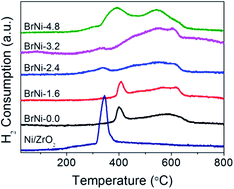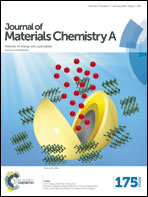Porosity effect on ZrO2 hollow shells and hydrothermal stability for catalytic steam reforming of methane†
Abstract
Hydrogen is an emerging energy source/carrier for oil refining and fuel cell applications. The development of an efficient and stable catalyst to produce hydrogen-rich gas is required for industrial application. The Ni@yolk-ZrO2 catalyst could be a potential solution to tackle the challenges in hydrogen production. The catalyst was characterized using a combination of XRD, TEM, AAS, TPR, BET, and XPS. In this study, the amount of micropores in ZrO2 hollow shells was demonstrated to influence the catalytic performance. Ni@yolk-ZrO2 catalysts were evaluated for 48 hours under steam reforming of methane and their porosity effect in ZrO2 hollow shells was identified. From the characterization of BET and catalytic evaluation, the physical information of the ZrO2 hollow shell was established, which affected the catalytic performance in steam reforming of methane. Furthermore, the results from XPS and TEM showed that Ni particles were controlled under a ZrO2 yolk–shell structure framework and showed the characteristic of moderately strong hydrothermal stability after the steam reforming test. The catalysts were studied at a GHSV of 50 400 mL gcat−1 h−1 and S/C = 2.5 at 750 °C and they remained stable with methane conversion more than 90% for 48 hours.


 Please wait while we load your content...
Please wait while we load your content...